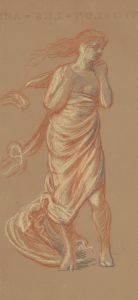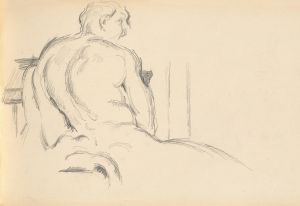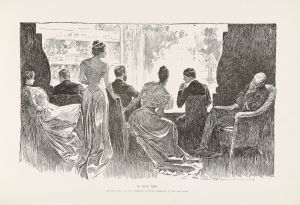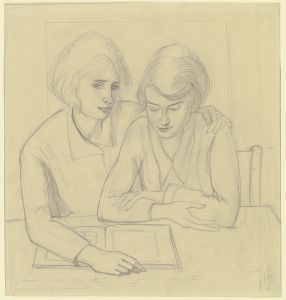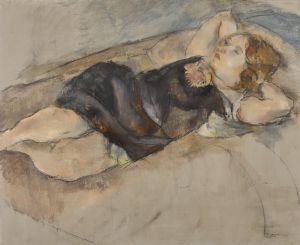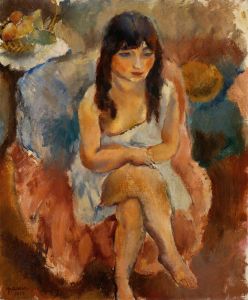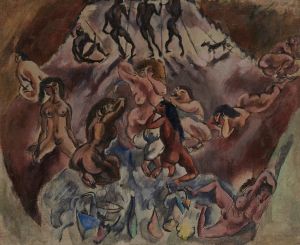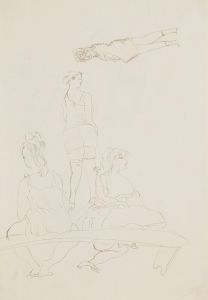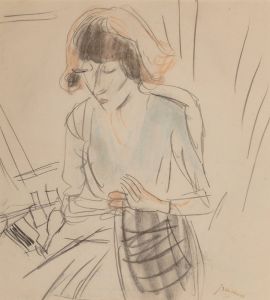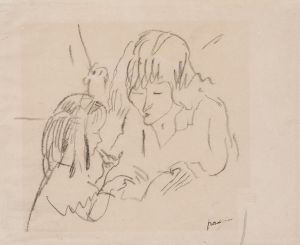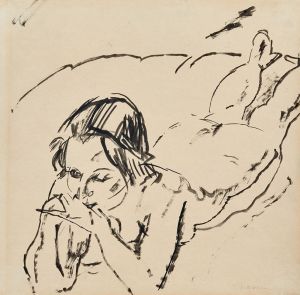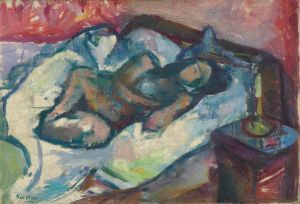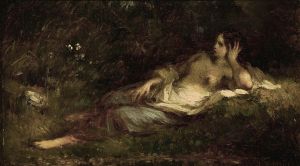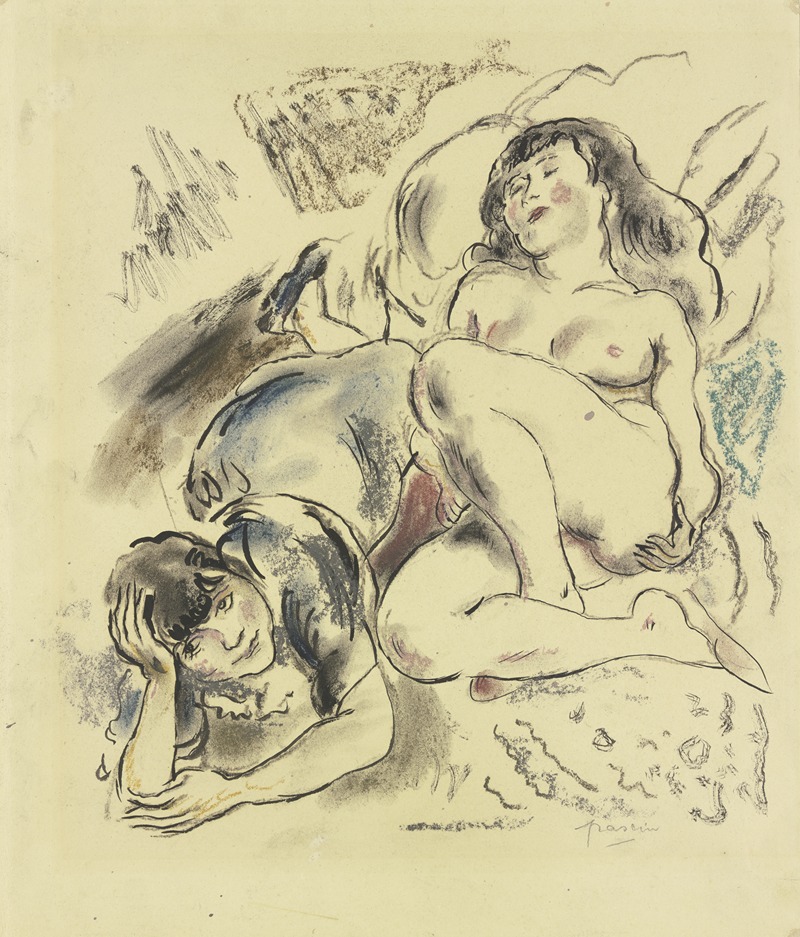
Zwei Mädchen auf einem Ruhebett
A hand-painted replica of Jules Pascin’s masterpiece Zwei Mädchen auf einem Ruhebett, meticulously crafted by professional artists to capture the true essence of the original. Each piece is created with museum-quality canvas and rare mineral pigments, carefully painted by experienced artists with delicate brushstrokes and rich, layered colors to perfectly recreate the texture of the original artwork. Unlike machine-printed reproductions, this hand-painted version brings the painting to life, infused with the artist’s emotions and skill in every stroke. Whether for personal collection or home decoration, it instantly elevates the artistic atmosphere of any space.
Jules Pascin, a Bulgarian-born artist of Sephardic Jewish descent, is widely recognized for his contributions to early 20th-century modern art. Known as the "Prince of Montparnasse," Pascin was an influential figure in the Parisian art scene, particularly during the interwar period. His works often depicted intimate, melancholic, and sometimes provocative scenes, reflecting his deep sensitivity and complex emotional world.
One of his notable works, Zwei Mädchen auf einem Ruhebett (translated as Two Girls on a Couch), exemplifies Pascin's characteristic style. The painting portrays two young women reclining on a couch, rendered in a soft, muted palette that emphasizes the tenderness and vulnerability of the scene. The figures are depicted with a sense of intimacy and quiet introspection, a recurring theme in Pascin's oeuvre. His use of delicate, fluid lines and subtle shading creates a dreamlike quality, drawing the viewer into the private world of the subjects.
Pascin's artistic approach was heavily influenced by his travels and exposure to various cultures. Born in Vidin, Bulgaria, in 1885, he later moved to Vienna and Munich before settling in Paris in 1905. He became associated with the École de Paris, a group of international artists working in the French capital. Pascin's work often reflected the bohemian lifestyle of Montparnasse, where he mingled with other prominent artists and writers of the time. His art was also shaped by his experiences in the United States, where he lived during World War I.
Zwei Mädchen auf einem Ruhebett is a testament to Pascin's ability to capture the human form with sensitivity and nuance. The painting's composition and subject matter suggest an exploration of themes such as intimacy, companionship, and the complexities of human relationships. While the identities of the two women remain unknown, their relaxed poses and the serene atmosphere of the scene invite viewers to contemplate the emotional connection between them.
Pascin's life was marked by personal struggles, including bouts of depression and a tumultuous romantic life. These challenges often found expression in his art, which oscillated between moments of joy and melancholy. Tragically, Pascin died by suicide in 1930 at the age of 45, leaving behind a rich legacy of work that continues to be celebrated for its emotional depth and artistic innovation.
Today, Zwei Mädchen auf einem Ruhebett is regarded as an important example of Pascin's contribution to modern art. The painting reflects his mastery of form and his ability to convey complex emotions through simple yet evocative compositions. It remains a poignant reminder of Pascin's unique voice in the art world and his enduring impact on the history of modern painting.





